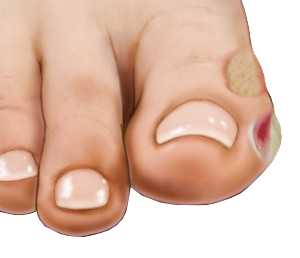What is a Foot Blister
A blister is a pocket of fluid that forms in a top layer of your skin on the outside of the body, typically on your feet. These sores can occur for a multiple of reasons and differ in size. There are a handful of instances a foot blister may develop, which include, an infection, insect bite, trauma or a skin burn.
Unfortunately, blisters tend to interfere with everyday activities, such as walking, standing or exercising for an extended amount of time. They can be especially painful depending on where it is located.
Causes of a Foot Blister
Most blisters are caused by friction against the skin. It’s common if you stand or walk several hours per day pressure is applied to your soles, heels, and toes, causing a foot blister.
However, anything that results in damage in tissue or to a blood vessel to the outside of the skin can cause a blister. It’s also common to experience a foot blister from tight-fitting or too loose shoes. This is why its especially important to get comfortable shoes which fit properly when going about your day.
In addition, another cause of a foot blister is excessive moisture or perspiration. During the warm seasons, this is a common complaint in athletes, especially runners. This occurs when sweat clogs the pores in the feet.
A foot blister can also develop from the following:
- Sunburn
- Fungal Infection
- Allergic Reactions
- Chemical Exposure
- Eczema
- Chickenpox
Foot Blister Symptoms
- Pain when rubbed
- Swelling & inflammation
- Redness
- Fluid pocket
Treatment of a Foot Blister
Typically, when experiencing a foot blister, the best treatment is to leave them alone. It’s common for them to heal after just a few days with some basic care.
When a blister forms on our feet, sometimes its difficult to leave them be. They can cause so much pain while wearing shoes that our basic instinct is to get rid of it. Although, this is not the best option. A foot blister appears on your foot to help reduce pressure and protect underlying tissues. They also help to stop the spread of viruses, bacteria, and fungus.
When to see a medical specialist:
If a blister occurs and becomes discolored, overly inflamed or does not heal within a few days, a doctor should be contacted. This could be a sign of infection or a serious underlying condition.
HOW TO CARE FOR A FOOT BLISTER
For a preferred foot bluster specialist in Broward or Palm Beach County call us today at 954-906-9272 to schedule a consultation. For a South Florida foot doctor located in Boca Raton, Deerfield Beach, Coral Springs & Plantation, contact us.

